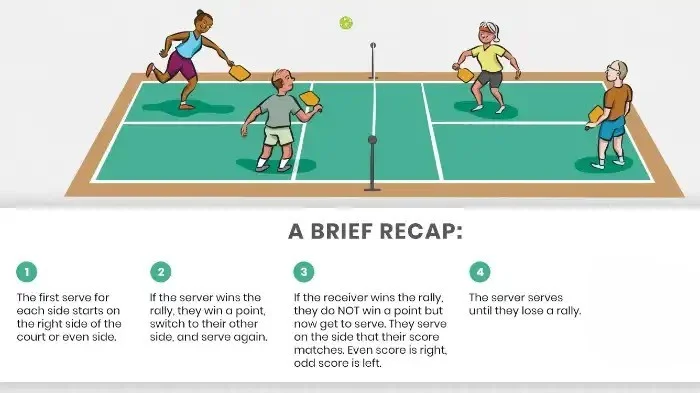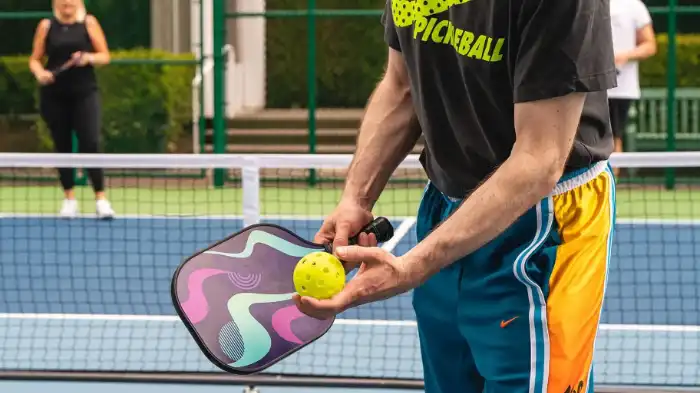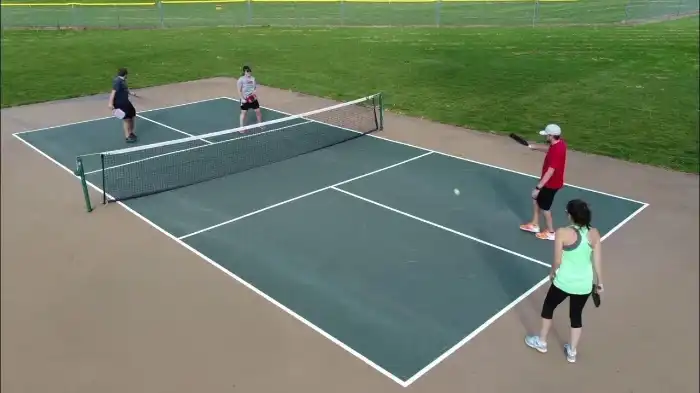When it comes to pickleball, understanding the intricate scoring rules of the game is essential to enjoying and excelling in this increasingly popular sport. One common question that arises among beginners is “Can only the serving team score in pickleball?”. In this blog, we are going to explain about pickleball scoring and its rules. Then, we are going to answer the question, “Can only the serving team score in pickleball?”.
Understanding Pickleball Scoring
Before we delve into the specific rule, let’s quickly go over the basics of pickleball scoring. Traditional pickleball games are typically played to 11 points, but they can also be played to 15 or 21 points in some cases. Games are typically won by being the first team to reach the designated number of points, but there is one exception.
If both teams are tied at 10 points (or whatever the designated winning point is), the game must be won by a margin of two points. So, for example, a team cannot win a game by reaching 11 points if their opponents only have 10 points. Instead, the game continues until one team has a lead of at least two points over the other.

Pickleball Scoring Rules
Pickleball has a unique scoring system that can sometimes be confusing to newcomers. Here are the basic scoring rules for pickleball:
Scoring System: In pickleball, games are typically played to 11 points, and you must win by two points. However, some variations of the game may use a 15-point system.
Scoring Serve: You can only score points when your team is serving. In pickleball, you and your partner take turns serving. The server calls out the score before serving, with the server’s score stated first, followed by the receiver’s score.
Faults And Side-Outs: Points can be scored during your team’s serving turn. If you fault (make a service error, hit the ball out of bounds, or fail to clear the net), the serve passes to the opposing team, and they have a chance to score.
No Second Serve: Unlike tennis, there are no second serves in pickleball. You only get one chance to serve correctly.
Winning The Game: To win a game, you must reach the agreed-upon score (usually 11 or 15) and be leading by at least two points. If the score is tied at 10-10 (or 14-14), the game continues until one team wins by two points.
Server Rotation: When your team wins a point, you get to serve again. However, pickleball uses the “two-bounce” rule for the first two serves of each point. The serve must clear the net and bounce in the opposing service court (the area diagonally opposite the server). After the first two bounces, the ball can be volleyed in the air.
Server’s Position: The server must serve from behind the baseline and hit the ball diagonally to the opponent’s service court.
Non-Volley Zone (Kitchen): In the non-volley zone (the area immediately in front of the net), you can’t volley the ball (hit it in the air before it bounces). You must let the ball bounce before hitting it inside the non-volley zone.
Switching Sides: In games played to 11 points, players switch sides when the first team reaches 6 points. In games to 15 points, players switch at 8 points.
Match: Matches in pickleball are typically best of three games. The player or team that wins two games first wins the match.
Can Only the Serving Team Score in Pickleball?
In pickleball, there are two teams, each consisting of one or two players on each side of the net. The game begins with a serve from one team to the other. The serving team starts with the ball, and the receiving team’s goal is to return the ball over the net and into the serving team’s side of the court.
Only the serving team has the opportunity to score points. They can score points by winning a rally, which means that they keep the ball in play and force an error on the part of the opposing team (such as a ball landing out of bounds or hitting the net), or by making the ball unreturnable for the receiving team. If the serving team wins the rally, they earn a point, and the serve rotates to the other team.

If the receiving team wins the rally, they do not score any points. Instead, their goal is to regain the serve and have the opportunity to score points on their own serve. When the receiving team wins a rally, they earn the right to serve the ball. If they continue to win rallies while they are serving, they can accumulate points, but they do not score points on the serving team’s mistakes.
The game continues with each team taking turns serving, and the points are only scored by the serving team. The first team to reach the predetermined number of points (usually 11, 15, or 21) while being ahead by at least two points wins the game. This scoring system adds an element of strategy and back-and-forth play to the game of pickleball.
Frequently Asked Questions
Yes, only the serving team can score points in pickleball. If the receiving team wins a rally, they do not score points; instead, their goal is to regain the serve and have the opportunity to score on their own serve. Points are earned by the serving team when they win a rally, either by forcing an error on the part of the opposing team or making the ball unreturnable for the receiving team. This unique scoring system is a fundamental aspect of the game.
Pickleball games are usually played to 11 points, but variations may use 15 or 21 points. You must win by a margin of at least two points.
In games where you play to 11 points, players switch sides when one team reaches 6 points. In 15-point games, this switching occurs when a team reaches 8 points.
In pickleball, after the serve, the ball must clear the net and bounce in the opposing service court. However, once the ball has bounced in the receiving team’s court, it can be volleyed in the air, and it doesn’t need to bounce again before the opponent returns it.
Conclusion
In pickleball, understanding the scoring rules is crucial to enjoy and succeed in the game. The answer to the question “Can only the serving team score in pickleball?” is a resounding yes. Only the serving team has the opportunity to accumulate points. The game’s dynamics, with its unique scoring system, add an exciting element of strategy and competitiveness to this increasingly popular sport. So, remember, in pickleball, the serving team’s performance is the key to victory.

